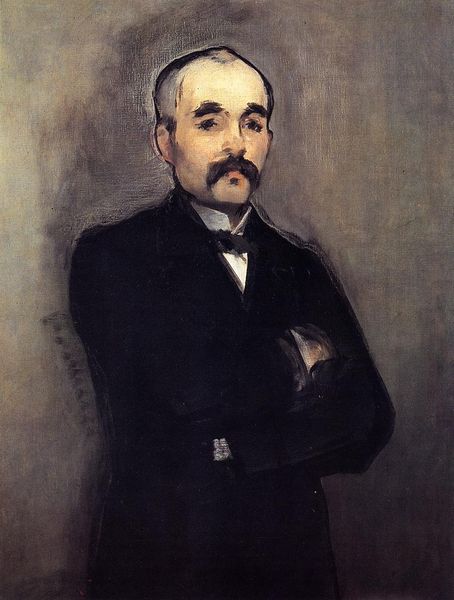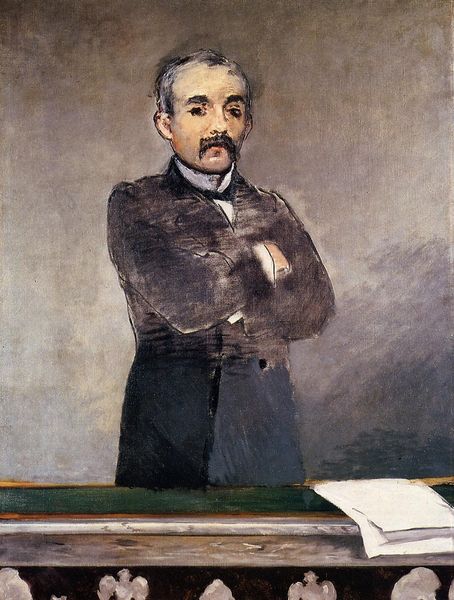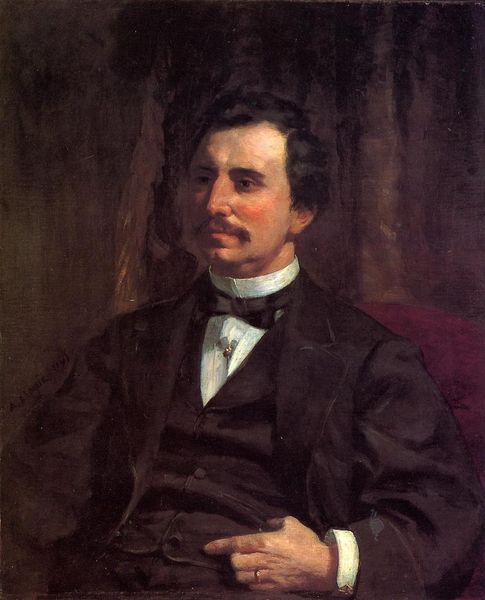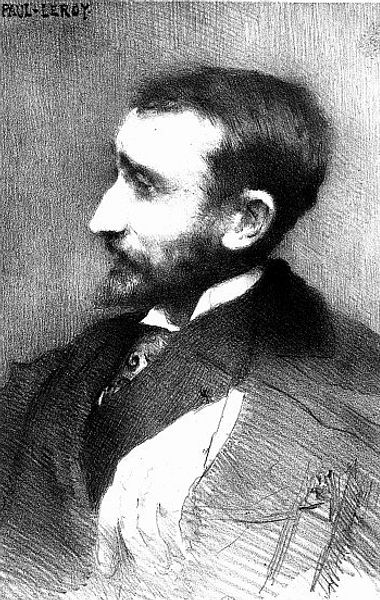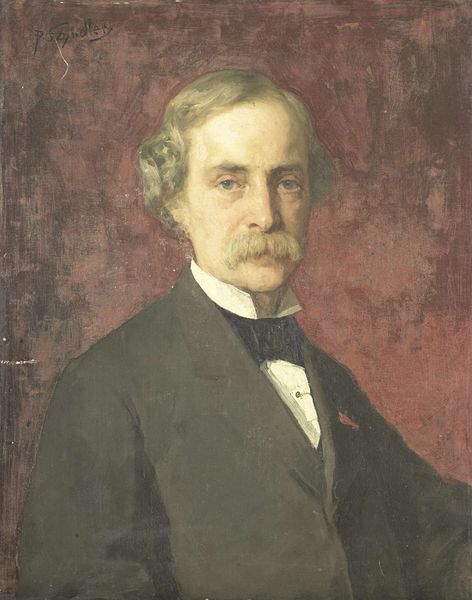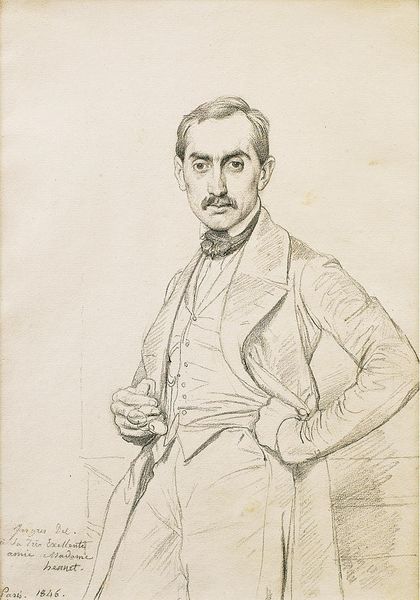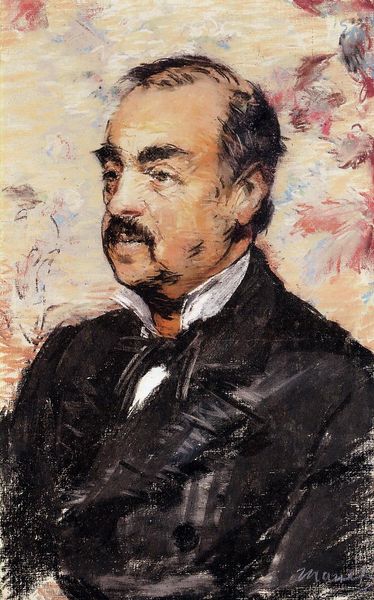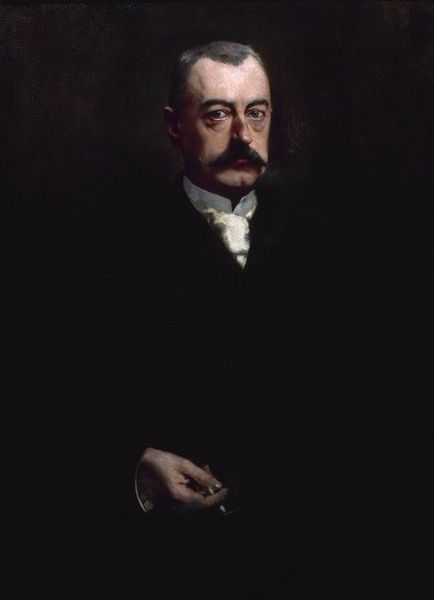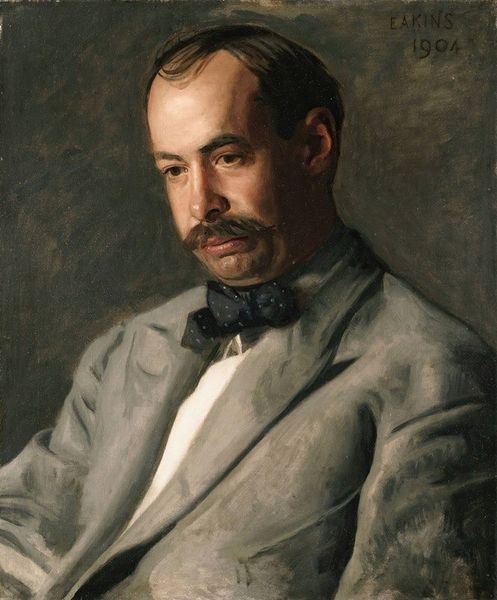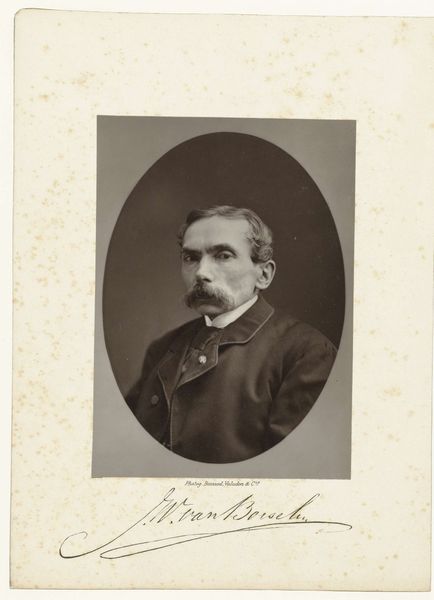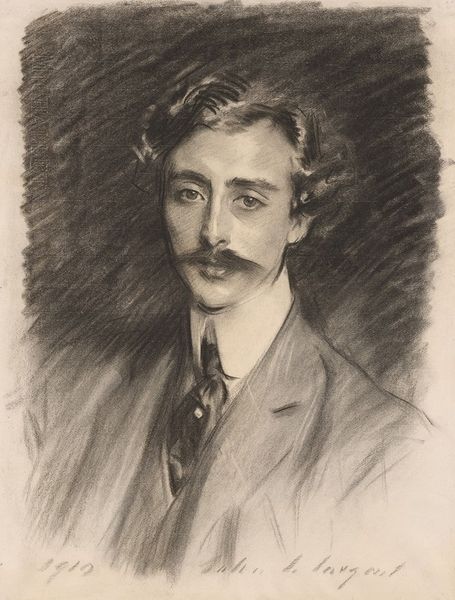
painting, oil-paint, impasto
#
portrait
#
painting
#
oil-paint
#
impasto
#
intimism
#
romanticism
Copyright: Public domain
Editor: Here we have a portrait of Walter Fedorovich Nuvel, an oil painting by Léon Bakst. I'm struck by the intimacy of it – the relaxed pose and the soft, muted palette create such a personal feel. What can you tell us about the historical context in which Bakst created this work? Curator: It's interesting you pick up on the intimacy. Bakst, deeply involved with the Ballets Russes, often depicted artists, dancers, and intellectuals of his circle. Understanding this milieu is key. Who was Walter Nuvel in relation to Bakst, and how does their relationship inform the way he is portrayed here? Editor: Well, they were both part of this artistic circle in early 20th-century Russia, but I'm unsure how that influences the painting itself. Curator: Consider the era's rising interest in artistic circles and the public’s increasing curiosity about these figures' private lives. Portraits then became tools for constructing public identities, a means to broadcast one’s affiliations. Bakst positions Nuvel, not just as an individual, but as a member of a certain class, engaged in specific artistic activities. Note the clothing, the carefully placed hand with the ring. How do these contribute to our understanding of his position within that society? Editor: That makes sense. The details feel carefully considered now. It's not just a portrait; it's a statement about belonging and status. Curator: Precisely. The seemingly casual intimacy you observed at first glance is carefully curated for public consumption, contributing to a defined artistic identity. It reflects and constructs the visual language of belonging in elite cultural circles of the time. And given your studies on the canon, think about where such pieces end up… within institutional collections and within historical records… contributing to what stories are elevated and preserved over others. Editor: That really shifts how I see it. It's less about personal connection and more about how art creates and reflects the values of a group, especially how institutions maintain those values. Thanks for that insight! Curator: Indeed. Exploring that dynamic is what helps us move past aesthetics and closer to how these cultural artefacts truly function in society.
Comments
No comments
Be the first to comment and join the conversation on the ultimate creative platform.
